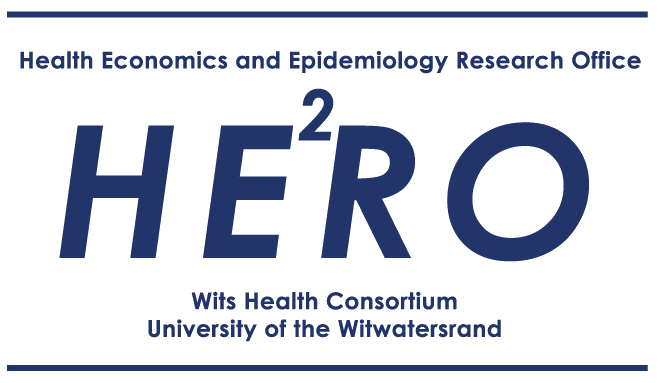Introduction
The “Economic Impact of HIV” project synthesised the available evidence on the economic impact of HIV into a series of policy briefs that can help decision makers in the ministries of finance and health in low- and middle-income countries (LMIC) decide on the future financing of their country’s HIV programme. The briefs were drafted by a team of authors in 2020-2022 and further refined during a series of webinars with an academic and LMIC government staff audience. The briefs are available as 3 summary briefs and 17 in-depth policy briefs.
The primary authors of the briefs are Markus Haacker (University College London) and Gesine Meyer-Rath (HE²RO, University of the Witwatersrand/ Boston University), with additional input provided by Kate Harris (Bill & Melinda Gates Foundation), Arjun Vasan (US Treasury), Stef Bertozzi (UCSF Berkeley), Lorna Tumwebaze (Bill & Melinda Gates Foundation), and webinar attendants. The project was funded by the Bill & Melinda Gates Foundation. The views and opinions expressed in the webinars and the policy briefs do however not necessarily reflect the positions or policies of the Bill & Melinda Gates Foundation.




Markus Haacker *19 March 1970 | †25 August 2023
It is with great sadness that we note the unexpected death of Markus Haacker on 25 August 2023. Markus co-led the “Economic Impact of HIV” project since its inception in late 2019, and is the main author of the majority of materials developed through the project. The project was a culmination of his life-long work on the micro- and macro-economic impact of HIV and AIDS, a field which he single-handedly pioneered while at the International Monetary Fund between 1999 and 2008. In a number of projects in his last months, he prepared the ground for expanding the methods used in his work on HIV to other chronic diseases, while continuing to bring to bear macroeconomic and public finance tools on health economic evaluations.
The central statement in our summary brief #1, on the health and economic returns on investments in HIV, also summarises the arc of Markus’ work, from rabble-rousing and focussing the world’s attention on the impending economic catastrophe that HIV heralded, to supporting governments’ commitment to funding the global HIV response, to quantifying, as well as we could, the eventual impact this response had had:
“As of 2000, it was expected that up to half of young people growing up in some countries with high HIV prevalence would eventually die because of AIDS. Because of the ubiquitous effort to fight HIV, such catastrophic impacts did not materialise anywhere; for the same reason, we never had to find out how bad the economic and social repercussions of such a health shock would have turned out.
That by itself is one of the returns to investment in the global response to HIV.”
And that the world never had to find out how bad the economic repercussions of AIDS would have been in the absence of the global HIV response is certainly one of the returns to Markus’ body of work.
With Markus, we have lost a giant in this field, a repository of information, a generous colleague continuously willing to share information, insights and well-grounded criticism, and a wonderful human being. Across his many spheres of influence, we endeavour to continue his work as well we can.
Gesine Meyer-Rath
for the “Economic Impact of HIV” team
Summary Briefs
The summary briefs provide an overview of three main areas of economic impact.
Master Slide Set
Policy Briefs
The policy briefs provide more detail on the evidence available on each of the topics.
1. The State of Programme Implementation to Reduce HIV Transmission & Aids-Related Mortality
2. Increased Health and Life Prospects and Their Economic Valuation
3. HIV, Population Dynamics and the Labour Force
4. Human Capital
5. Capital and Investment
6. Productivity and Employment of People Living with HIV
7. Economic Growth – Overview
8. Interactions Between HIV and Poverty
9. Disease Burden Across Population Sub-Groups
10. Trade-offs between Allocation to Health and Other Sectors
11. Domestic Public Funding for HIV
12. Trade-offs and Synergies between HIV and Other Health Objectives
13. Assessing Cost Effectiveness Across HIV and Health Interventions
14. External and Domestic Health Financing, and the Role of Public vs. Private Domestic Health Funding
15. Public and Private Provision of Health and HIV Services
16. Trade-offs within the HIV Budget
17. The Economics of HIV and of HIV Programmes in the Era of Covid-19
Technical Briefs
The technical briefs provide more detail on the evidence available on each of the topics.
1. The State of Programme Implementation to Reduce HIV Transmission & Aids-Related Mortality
2. Increased Health and Life Prospects and Their Economic Valuation
3. HIV, Population Dynamics and the Labour Force
4. Human Capital
5. Capital and Investment
6. Productivity and Employment of People Living with HIV
7. Economic Growth – Overview
8. Interactions Between HIV and Poverty
9. Disease Burden Across Population Sub-Groups
10. Trade-offs between Allocation to Health and Other Sectors
11. Domestic Public Funding for HIV
12. Trade-offs and Synergies between HIV and Other Health Objectives
13. Assessing Cost Effectiveness Across HIV and Health Interventions
14. External and Domestic Health Financing, and the Role of Public vs. Private Domestic Health Funding
15. Public and Private Provision of Health and HIV Services
16. Trade-offs within the HIV Budget
17. The Economics of HIV and of HIV Programmes in the Era of Covid-19
Wits Health Consortium, University of the Witwatersrand